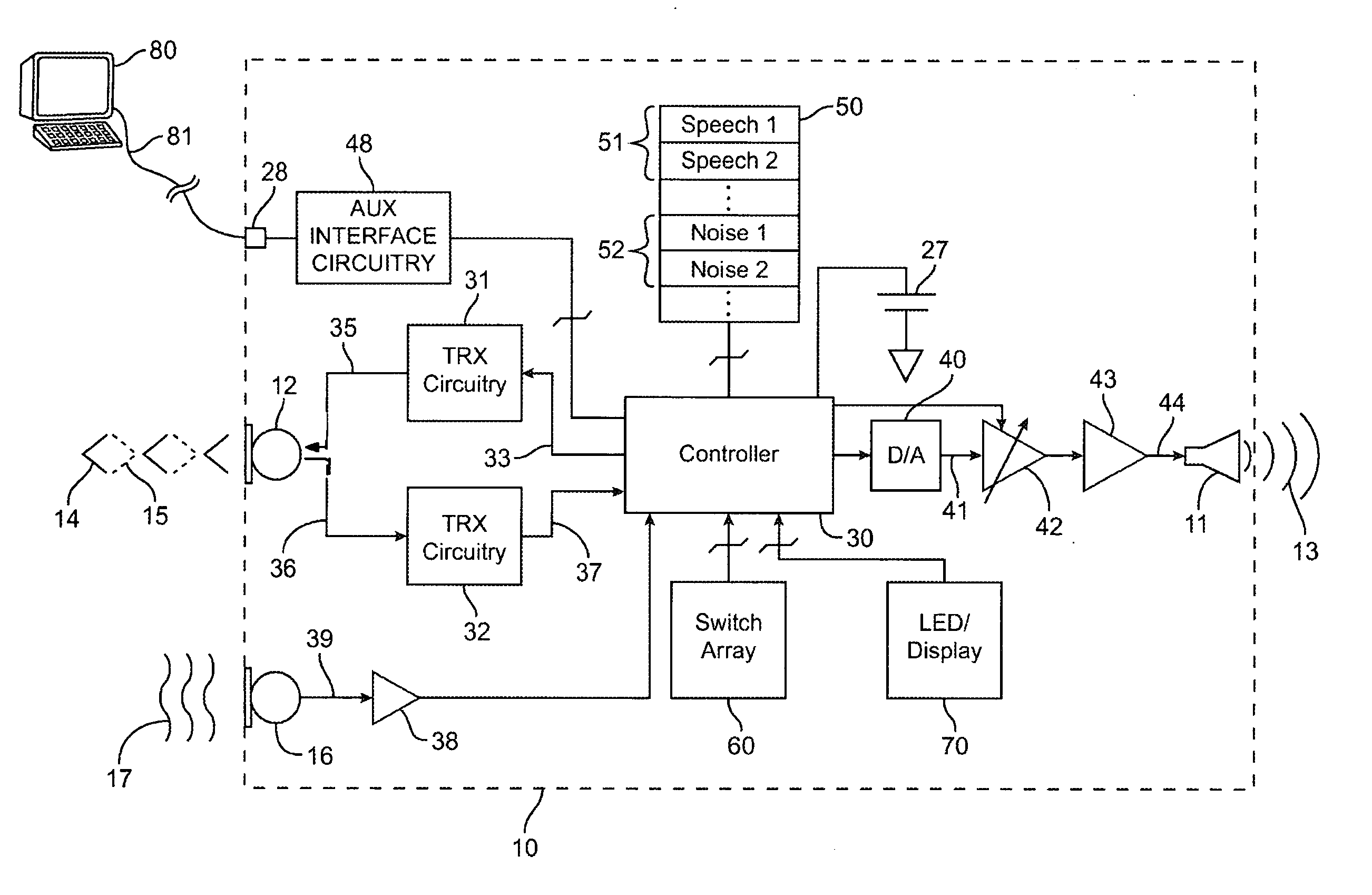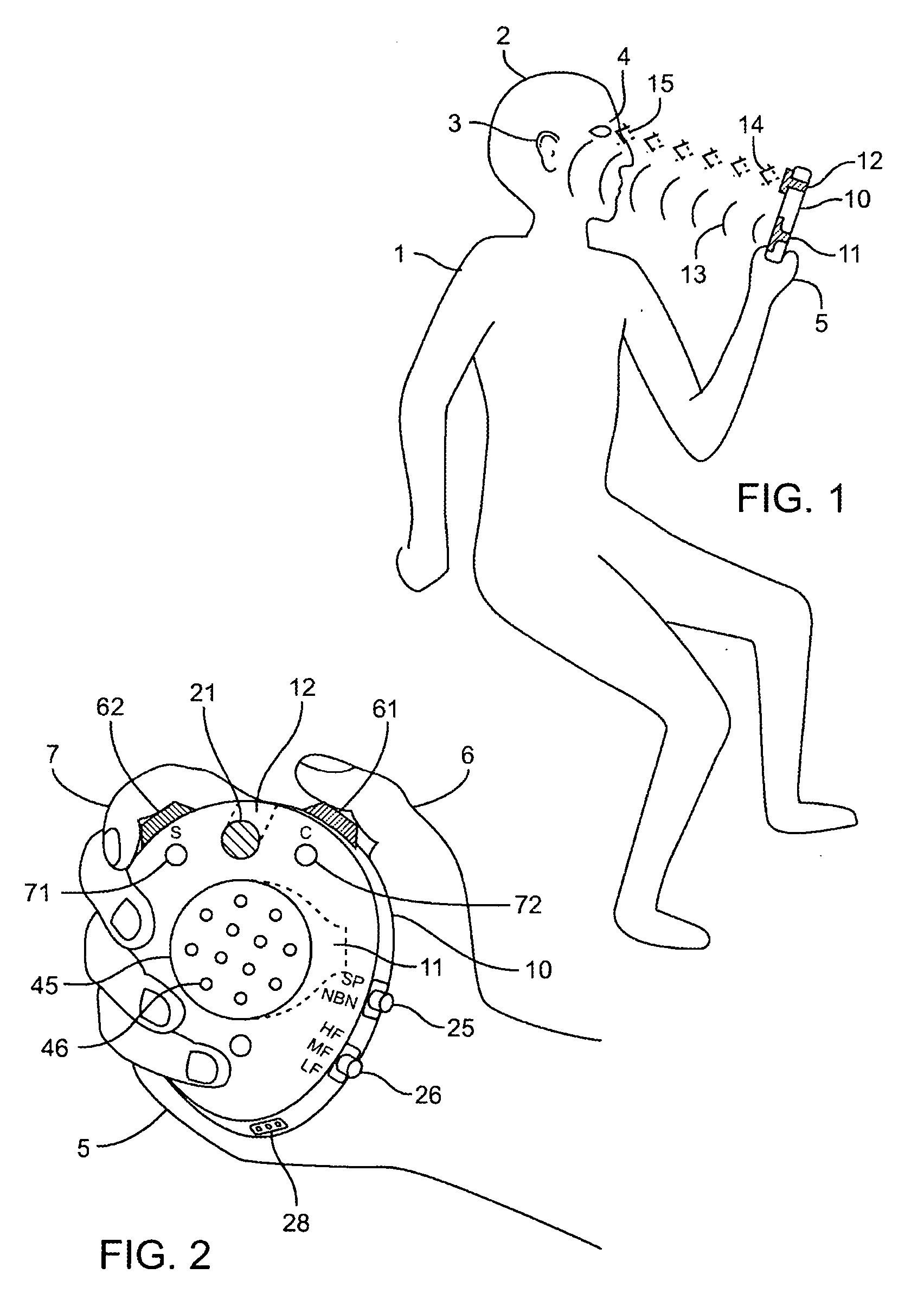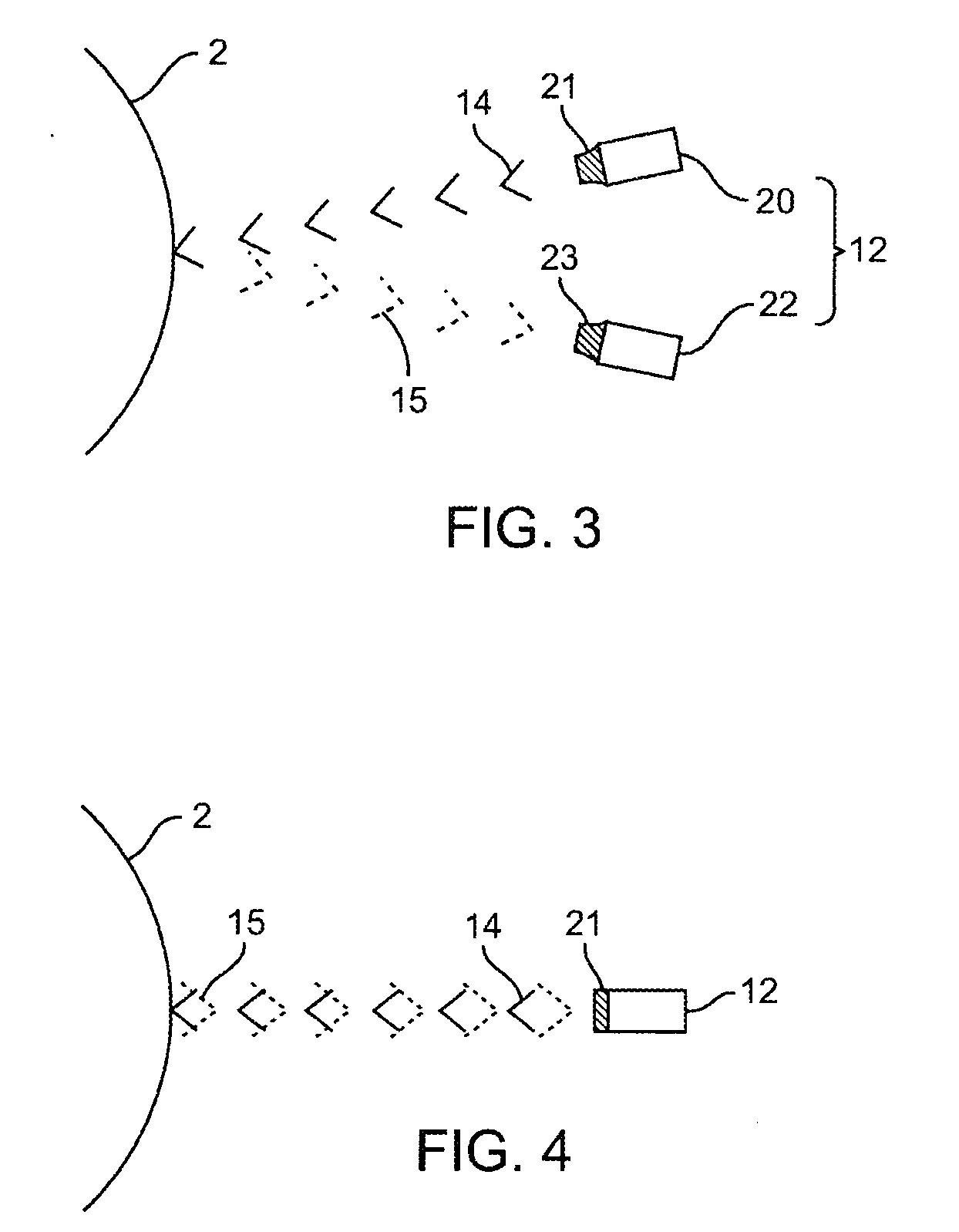Personal hearing evaluator
a hearing evaluation and personal technology, applied in the field of airconduction hearing evaluation, can solve the problems of difficult to use, and difficult to meet the needs of users, and achieve the effect of simple verification
- Summary
- Abstract
- Description
- Claims
- Application Information
AI Technical Summary
Benefits of technology
Problems solved by technology
Method used
Image
Examples
Embodiment Construction
[0044] The present invention, shown in FIGS. 1-12, provides a personal hearing evaluation device 10 for accurately presenting multi-level acoustic test stimuli (sounds) to an individual via an audio transducer (i.e., speaker) 11 incorporated within the housing of the device. The invented device 10, as shown in FIGS. 1 and 2, is designed for holding by hand and for directing sound 13 from its speaker 11 towards an ear 3 of a user 1 in a contactless manner but within the direct sound field range of the speaker. In the preferred embodiments, shown in FIGS. 1-11, the device 10 comprises a position sensor 12 for automatically measuring the position of the device 10 with respect to the user's head 4, or a part thereof of interest, depending on the test mode as described below. The device 10 also comprises keys (switches, e.g., 61 and 62, FIG. 2) for selecting at least two levels of sound 13, presented in the direction of an ear (monaural mode, FIGS. 8 and 9) or both ears (binaural mode, F...
PUM
 Login to View More
Login to View More Abstract
Description
Claims
Application Information
 Login to View More
Login to View More - R&D
- Intellectual Property
- Life Sciences
- Materials
- Tech Scout
- Unparalleled Data Quality
- Higher Quality Content
- 60% Fewer Hallucinations
Browse by: Latest US Patents, China's latest patents, Technical Efficacy Thesaurus, Application Domain, Technology Topic, Popular Technical Reports.
© 2025 PatSnap. All rights reserved.Legal|Privacy policy|Modern Slavery Act Transparency Statement|Sitemap|About US| Contact US: help@patsnap.com



